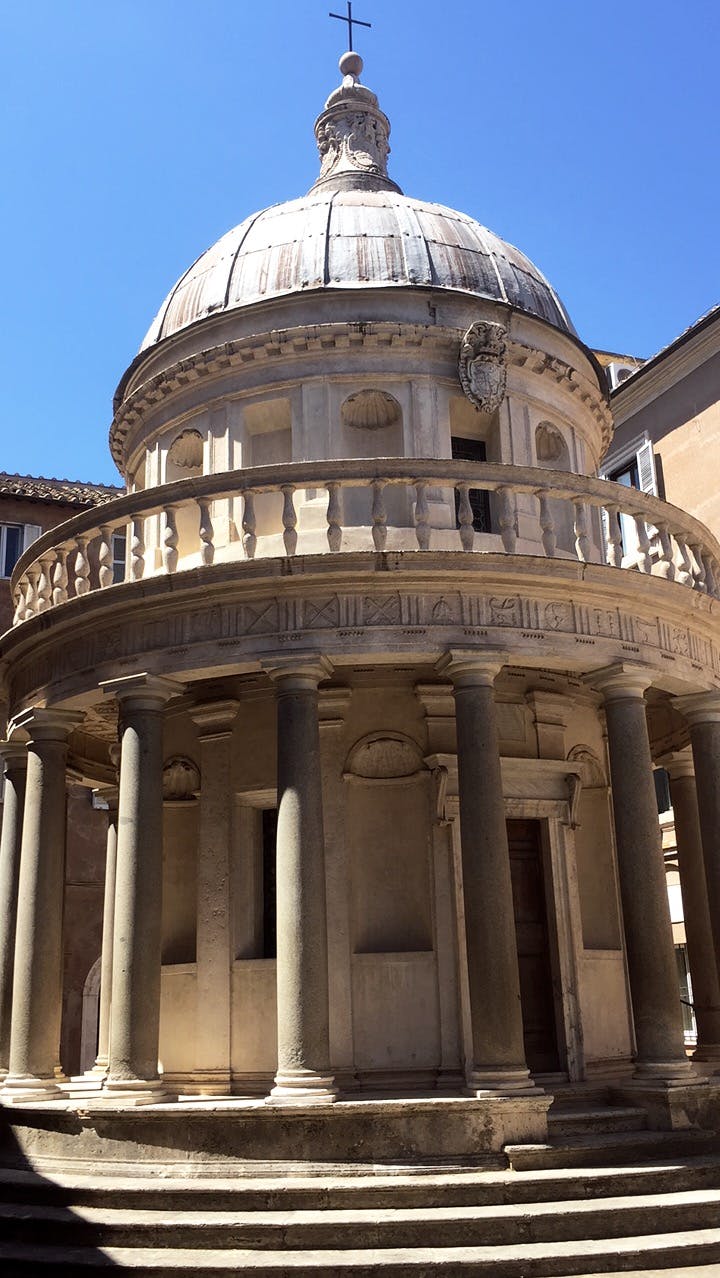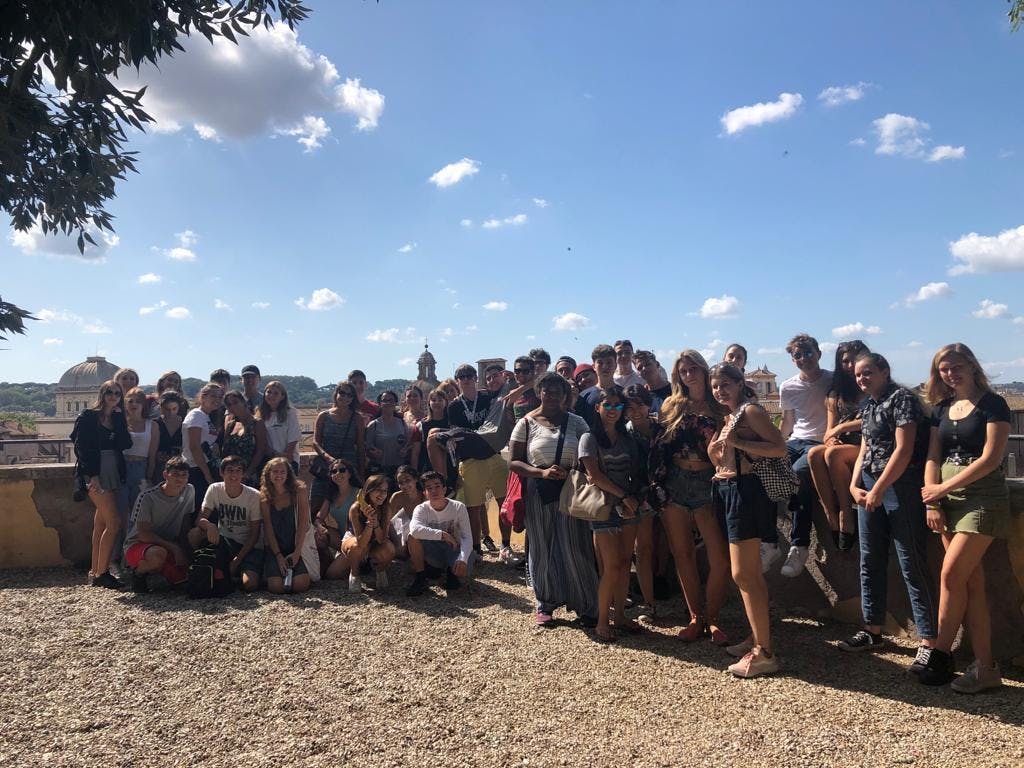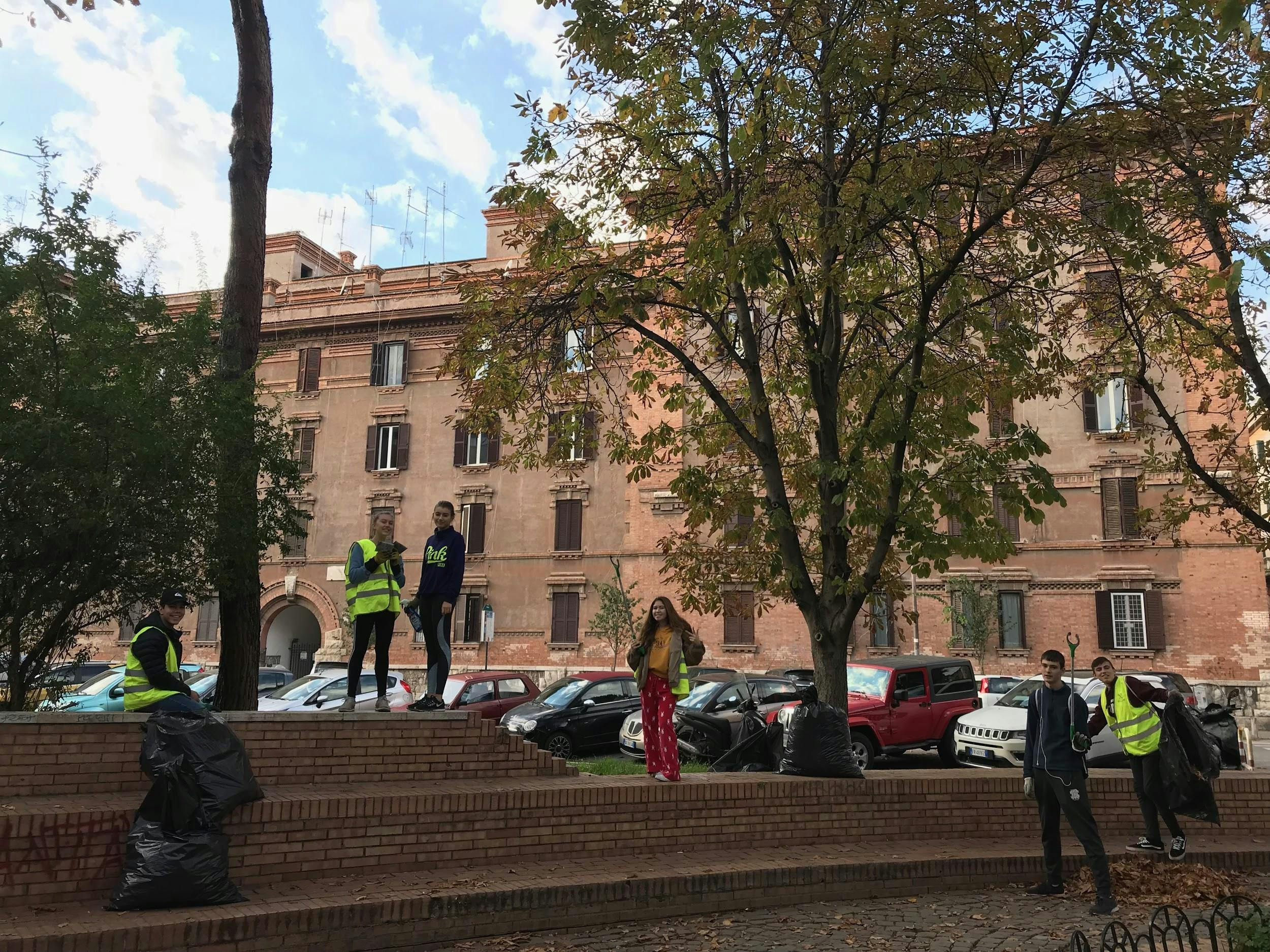
How I Discovered My Favorite Place in Rome, Thanks to My Art History Class
The Tempietto was built in 1502 and situated high up on Rome’s Janiculum Hill. This “small temple” embodies my passion for Italian Renaissance art. I first discovered the Tempietto in my eleventh grade Renaissance Art in Rome class at St. Stephen’s. Once a week, my Renaissance Art class took a field trip to visit a specific site or monument. These field trips continue today. In 2012, the Tempietto was the destination of one of these field trips.
The tiny round, two-level temple, its base of concentric marble steps leading to a first level surrounded by a colonnade of marble columns, echoes ancient Greek temples. The heavy marble steps and columns provide weight and substance to the structure; yet, it resembles a tiny sculpted treasure, because of its small size – only four or five people can stand inside comfortably. The capitals of the columns have been deliberately aligned to extend slightly beyond the entablature that separates the first and second levels, giving the impression of an outward swell. The repetition of circular forms creates a feeling of constant motion – as if the Tempietto is a carousel with columns as its horses. It is more like sculpture than practical architecture. Unlike churches and other monuments, the importance is not placed on what is inside -- made evident by the cramped interior -- rather, the exterior is the focal point. It is not necessary to enter the Tempietto and gaze up at the domed ceiling in order to feel the monumentality and impressiveness of this piece. Bramante not only understood perspective and other innovations of his Renaissance predecessors; he also understood how to recreate the awe-inspiring experience of ancient Roman buildings.
I can simply gaze up at it from the steps that lead up to the archway that frames the Tempietto in the perfect window. I feel as if I have a special relationship with the Tempietto, perhaps its because when I go to visit it there usually isn’t anyone else there except for the occasional groundskeeper. Maybe its simply that no one wants to make the hike from the center of Rome, across the Tiber river, through Trastevere, and up the Janiculum hill to see it. Whatever it is, it allows me to maintain my solitary, intimate relationship with the Tempietto. The Tempietto amazes me because of Bramante's unique ability to make such heavy architecture look as beautiful, proportionate and comprehensible as a statue while seeming as delicate as a gem.
A graduate of Washington University in St. Louis, Natalie Edwards double majored in Art History and Archaeology and Economics. Natalie attended St. Stephen's as a boarder in 11th grade, and later returned to Bologna for a semester abroad during university. Natalie is fluent in Italian and is currently a Residential Assistant in the St. Stephen's Boarding Department and a Communications Office Assistant.






